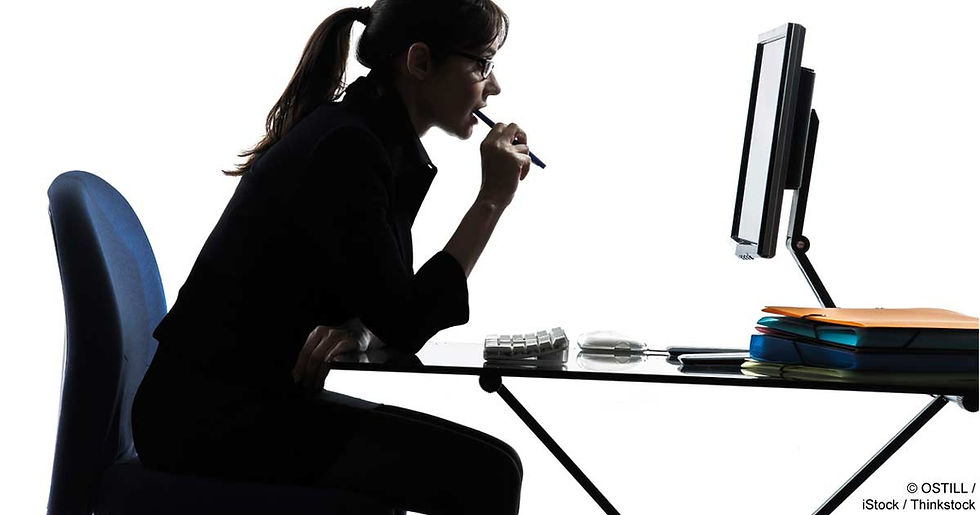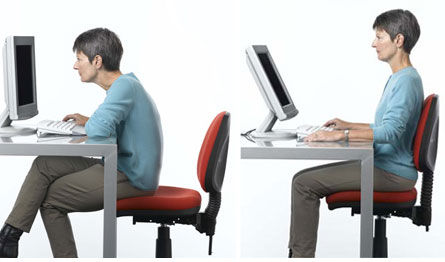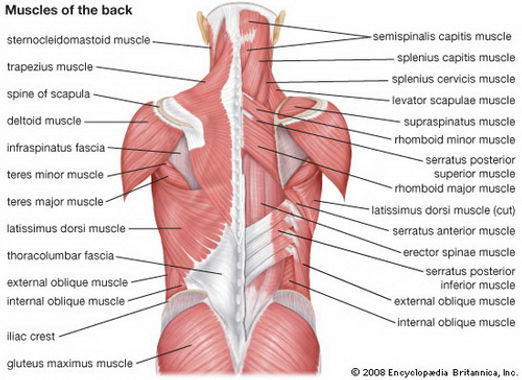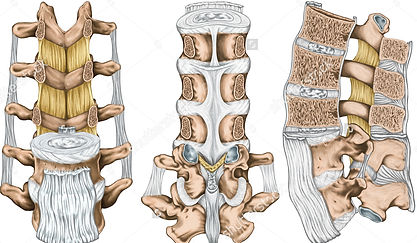



Neck & Upper Back Pain
Tendons, Ligaments, Joints, Muscles and Skin
BACK ANATOMY
The intricate anatomy of the back provides us with movement, support, flexibility, and strength. The structure of the back is formed by the vertebral column, which is made up of 7 cervical, 12 thoracic, 5 lumbar vertebras and the sacrum and coccyx. The vertebral column encompasses and protects the spinal cord, which connects to your brain and controls movement and organ function. Each vertebra is stacked on top of each other and separated by an intervertebral disc, which provides cushioning and absorbs pressure. Groups of ligaments connect each vertebra together and tendons connect the vertebrae to muscles. The back muscles are divided into two groups, extrinsic and intrinsic muscles. Extrinsic muscles allow upper extremity movement and are composed of two categories, superficial and deep. Intrinsic muscles are also grouped into superficial and deep categories and move the vertebral column. Back pain can be acute or chronic depending on the duration and can be caused by a variety of sources. Some common complications include strained muscles, disc degeneration and disc herniation.


Strained muscles...
Muscles strains are very common and can either be acute or chronic. An acute strain can occur from one quick movement such as improperly lifting an item. On the other hand, chronic strains occur from repetitive movements or when a muscle has been overused (Back Strains and Sprains, 2016). This causes the muscles to be twisted, pulled or torn, which can cause small tears in the muscle fibers. This can lead to inflammation, pain and stiffness. Another important thing to conisder, is that when muscles are not used, they can become weak, which makes people who live sedentary lifestyle even more susceptible to muscle strains (Muscle Strains, 2016).
Example:
One of the main muscles affected in upper back pain is the trapezius. The trapezius works to keep your shoulders back, but when a person sits hunched over for extended periods of time it over works and can strain the muscle. This can lead to compression of the spinal segments, dowager’s hump, poor posture, stiffness, decrease range of motion in the shoulders and elbow flexion contractures (Key, 2016).

HIDDEN RISKS OF SITTING
More risks of sitting...
References
Anatomy and Function. (2016). Retrieved from http://umm.edu/programs/spine/health/guides/anatomy-and-function
Back Strains and Sprains. (2016). Retrieved April 04, 2016, from http://my.clevelandclinic.org/services/orthopaedics-rheumatology/diseases-conditions/back-strains-and-sprains
Muscle Strains. (2016). Retrieved from http://www.healthline.com/health/strains#Causes3
Key, S. (2016). Sitting at a Computer - What Can You Do About Computer-Back? Retrieved from http://www.simplebackpain.com/sittingatacomputer.html#axzz40NuRlaVc
